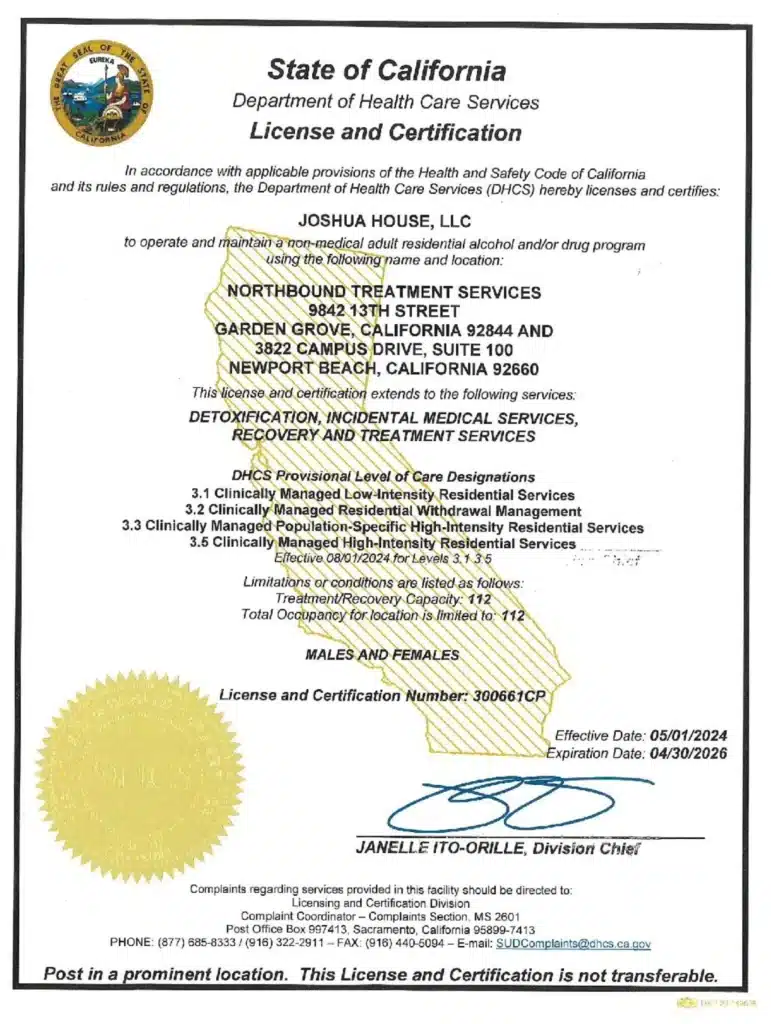Heroin derives from opium poppy plants that grow in Asia, Mexico, and Colombia. The hypnotic qualities of poppies were also used by the ancient Greeks for medicinal purposes. Over the centuries, heroin use in different forms has increased, particularly within the realm of prescription medication. In the early 2000s, reports of overdose and death from prescription pain medication, particularly OxyContin, began a sharp uptick.
Since then, the U.S. Food and Drug Administration documents a timeline of notices, meetings, initiatives, and events, all aimed to reduce heroin abuse and increase education and training on opioids for medical providers. There are a range of interesting facts about heroin addiction and the use and abuse of the drug by various cultures and where it’s evolved to today.
Fact #1: Heroin Addiction Changes The Makeup of Your Brain
When heroin enters the brain, it attaches to molecules on opioid receptors. These are located throughout the brain and body to deliver short-term, feel-good effects. Repeated use builds a tolerance of the drug, which means more is needed to achieve the same high.
Increased heroin use eventually leads to a dependence to avoid withdrawal symptoms. Finally, the brain becomes addicted to using heroin because the neurons have adapted to functioning normally only when the drug is present. Addiction is a disease where the person is unable to stop using the drug even if they want to or after it’s resulted in damaging health effects.
Fact #2: Heroin Products Were Once Available Over The Counter
The U.S. already faced a heroin epidemic over a century ago. The Bayer Company introduced heroin for medical use in the late 1800s in an effort to create a pain reliever that was safer than morphine. Heroin was introduced as a diluted form of morphine with “heroic” qualities of strong medicine; hence, the name.
Starting in the early 1900s, products, such as cough syrup and remedies for colic in babies, containing this new supposed superdrug were sold over the counter in the U.S. However, just a few years later, it was discovered heroin was actually two to three times more potent than morphine and absorbed rapidly by the brain. Its powerful nature makes it one of the most addictive opiate drugs available today.
Fact #3: Babies Can Be Born Addicted to Heroin
One of the crucial facts about heroin addiction is babies can be born with it. Babies are exposed to heroin by women who use it during pregnancy. As the baby develops inside the womb, it can become dependent on the drug due to regular exposure. Once born and the baby is cut off from the supply, it may suffer withdrawal symptoms referred to as neonatal abstinence syndrome (NAS).
Common signs and symptoms include fever, vomiting, excessive crying, slow weight gain. They begin to appear after the first 72 hours in newborns and must be put back on opiates, such as methadone or morphine, to gradually withdraw from them over time in a safe manner. The National Institute on Drug Abuse reported that as of 2014, a baby was born suffering from opioid withdrawal every 15 minutes.
Fact #4: 911 Good Samaritan Laws Protect Overdose Witnesses
Addiction is a common precursor to overdose. Overdose deaths involving heroin rose from 1999 to 2017 from 1,960 cases to 15,482, per the National Institute on Drug Abuse. Legislation has been enacted in 40 states and the District of Columbia to “provide immunity from arrest or prosecution for certain controlled substance possession and paraphernalia offense when a person who is either experiencing an opiate-related overdose or observing one calls 911 for assistance or to seek medical attention.”
These violations and immunity allowances are determined by state, with some states more restrictive with its immunity versus states like Vermont that has provided it for an expansive list of controlled substance offenses. The laws require a caller to have the reasonable belief someone is experiencing an overdose is reporting the emergency in good faith.
Fact #5: Overdose Reversal Treatment Is Now Available Without a Prescription
Due to the opioid epidemic, government agencies have had to face the facts of heroin addiction and provide easily obtainable solutions to reverse heroin overdose. In 2019, The U.S. Food and Drug Administration granted its final approval for the first generic naloxone hydrochloride nasal spray, more commonly known as Narcan. This life-saving medication can reverse or stop the effects of an opioid overdose.
When administering naloxone, it’s important to remember that it works in the body only 30 to 90 minutes, which makes it essential for the person to still receive emergency medical attention. Many first responders already carry it, but generic versions are now available in an auto-injection or nasal form at local pharmacies like CVS and Walgreens without the need for a prescription or training.
Fact #6: Not All Heroin Is Pure White
Only in its purest form is heroin a pure white powder. It’s also off-white when cut with other substances and dark brown or black as a tar-like liquid form. The coloring is based on what additives have been used to dilute it. Heroin sold on the street can have any number of additives, including other drugs.
Fentanyl mixed in with heroin has reached epidemic levels in many areas of the U.S. Fentanyl is a powerful synthetic drug typically used in end-of-life care and has been a leading cause in overdose deaths over the past several years. It has the potential to be up to 50 times more potent than heroin and carries deadly risks.
Fact #7: People Who Inject Drugs Are One of The Leading Causes of Hepatitis C
Heroin can be snorted, smoked, taken orally, and injected. People who inject drugs (PWID) are the highest-risk group for hepatitis C infection. Data shows each PWID infected with hepatitis C is likely to infect 20 other people, according to the National Institute on Drug Abuse.
Injecting heroin also increases the risk of the transmission of HIV/AIDS due to sharing needles. There’s also risk of damage to nasal tissues when snorting heroin and additional health problems when smoking or taking it in pill form.
Fact #8: Common Sayings Are Attributed to Heroin Addiction
Phrases like “going cold turkey” or “kicking the habit” are thought to stem from the withdrawal symptoms of heroin addiction. Two of the symptoms a person may experience are cold flashes with goosebumps and/or restlessness, especially in the legs, causing a person to kick. These are among the list of short-term and long-term physical and mental side effects a person may go through when addicted to and attempting to detox from heroin.
Additional symptoms include nausea, vomiting, sweating, paranoia, and hallucination. The presence, frequency, and severity of these types of side effects is largely dependent on the person’s history of drug addiction.
Fact #9: Heroin Is Typically Called By Another Name
It’s not too often that heroin is called by its given name. When prescribed as an opioid medication, it’s often Vicodin or Oxy (short for OxyContin). As a street drug, heroin has a range of interesting names, including: Big H, China White, Dope, Hell Dust, Junk, Mud, Smack, and Thunder.
The slang terms are based on street brands, the appearance of the type of heroin, and as a signifier of its effects. What may seem like a regular word may be code for a drug sold on the street. Heroin takes form in a number of ways, including an off-white or pure white powder and a black, tar-like substance.
Fact #10: Drug Smugglers Have Swallowed Heroin Bags For Transport
When illegally transporting heroin from one country to another, traffickers will go to great lengths to be discreet. One case report from 2009 described a 50-year-old woman attempting to transport heroin into the U.S. after swallowing 50 pellets of packed heroin, totaling 600 grams.
After being detained at the airport, she was taken to an emergency room where a CT scan of her stomach revealed rectangular-shaped masses in her colon. She was taken into custody, but fortunately, none of the packets had opened or caused obstructions to her body and 49 of pellets were recovered intact. Had they erupted, it could have caused heroin poisoning and inadvertently caused her to overdose.
Need Help With Heroin Addiction?
Heroin has been around for a long time and its dangerous, addictive effects have been universally agreed upon. Once heroin addiction has begun to change your behavior and appearance, it’s a sign that it’s time to seek help. Also, if you are unable to stop using it and continuously experience severe side effects and withdrawal symptoms as result, this is also symptomatic that addiction has taken over your body.
It’s not advisable to go through the process of detoxification alone. Withdrawal symptoms are painful, uncomfortable, and often unpredictable. Seeking treatment under the supervised care of a medical team is a safer solution. By doing so, you’ll have the help you need around-the-clock, as well as emotional support. History has shown us repeatedly how dangerous heroin addiction is to everyone, not only the person who is directly affected. Care through a treatment facility will provide the tools and resources you need for heroin addiction recovery.
During each state of heroin addiction treatment at the rehab center, you’ll learn about the root of your addiction, how to sustain sobriety, and ways to set your life back on the right track. For those who have dealt with the pains of drug addiction for years, it may seem like there’s no other way, but there is always help available.
Sources:
- National Institute on Drug Abuse. “Heroin DrugFacts.” National Institute on Drug Abuse, 16 June 2020, www.drugabuse.gov/publications/drugfacts/heroin
- KRITIKOS, P. G., and S. P. PAPADAKI. “UNODC – Bulletin on Narcotics – 1967 Issue 3 – 003.” United Nations : Office on Drugs and Crime, 1 Jan. 1967, www.unodc.org/unodc/en/data-and-analysis/bulletin/bulletin_1967-01-01_3_page004.html
- Center for Drug Evaluation and Research. “Opioid Timeline.” U.S. Food and Drug Administration, FDA, 10 July 2020, www.fda.gov/drugs/information-drug-class/timeline-selected-fda-activities-and-significant-events-addressing-opioid-misuse-and-abuse
- Nierenberg, Cari. “10 Interesting Facts About Heroin.” LiveScience, Purch, 27 Oct. 2016, www.livescience.com/56604-facts-about-heroin.html
- “Heroin.” DEA, www.dea.gov/factsheets/heroin
- National Institute on Drug Abuse. “Dramatic Increases in Maternal Opioid Use and Neonatal Abstinence Syndrome.” National Institute on Drug Abuse, 27 May 2020, www.drugabuse.gov/drug-topics/trends-statistics/infographics/dramatic-increases-in-maternal-opioid-use-neonatal-abstinence-syndrome
- National Institute on Drug Abuse. “Naloxone.” National Institute on Drug Abuse, 11 June 2020, www.drugabuse.gov/publications/drugfacts/naloxone
- The Heroin-Fentanyl Epidemic, odcp.ky.gov/
- National Institute on Drug Abuse. “Why Does Heroin Use Create Special Risk for Contracting HIV/AIDS and Hepatitis B and C?” National Institute on Drug Abuse, 28 May 2020, www.drugabuse.gov/publications/research-reports/heroin/why-are-heroin-users-special-risk-contracting-hivaids-hepatitis-b-c
Author
-

President, CEO & Founder at Northbound Treatment Network
Paul Alexander is the CEO, President & Founder of Northbound Treatment Network in Newport Beach, California. He believes wholeheartedly in transformational leadership, organizational health and effective, fully integrated substance use disorder and mental health treatment. With over 27 years of experience in behavioral healthcare, Paul has extensive knowledge of “in vivo” treatment modalities, clinical development, operations, strategy, marketing and financial planning. He has been widely recognized for his development of collegiate-based residential treatment programs for students in recovery and authored a research study at The University of California confirming this modality’s effectiveness.
Paul’s comprehensive professional experience, willingness to innovate, and emphasis on organizational health are vital factors in Northbound’s continued success. Paul received his Certified Addiction Treatment Specialist training at Saddleback College in Mission Viejo, CA, and was awarded Outstanding Alumni Service Award in 2002. Paul holds a Bachelor of Arts degree in Criminology, Law and Society, Summa Cum Laude, from University of California, Irvine, and a Juris Doctorate degree from Loyola Law School of Los Angeles. Paul currently serves on The National Association of Addiction Treatment Providers (NAATP) board. In addition, he serves on The Family Recovery Foundation board and The CarePossible board in Orange County; both organizations are committed to raising funds for family recovery and treatment for former military personnel. Paul is in recovery himself and lives in Orange County with his wife Silvana and his two young sons, Noah and Dean.







